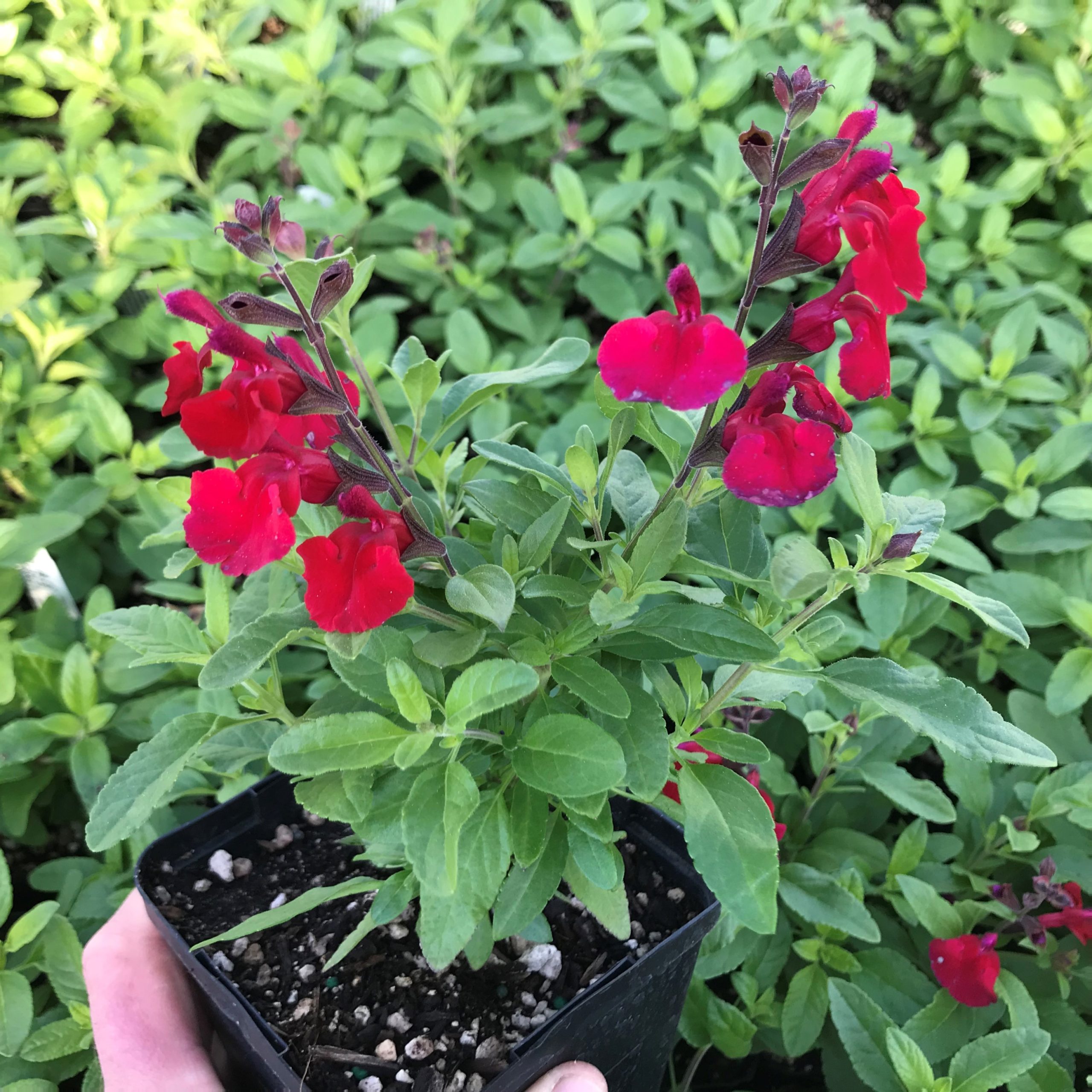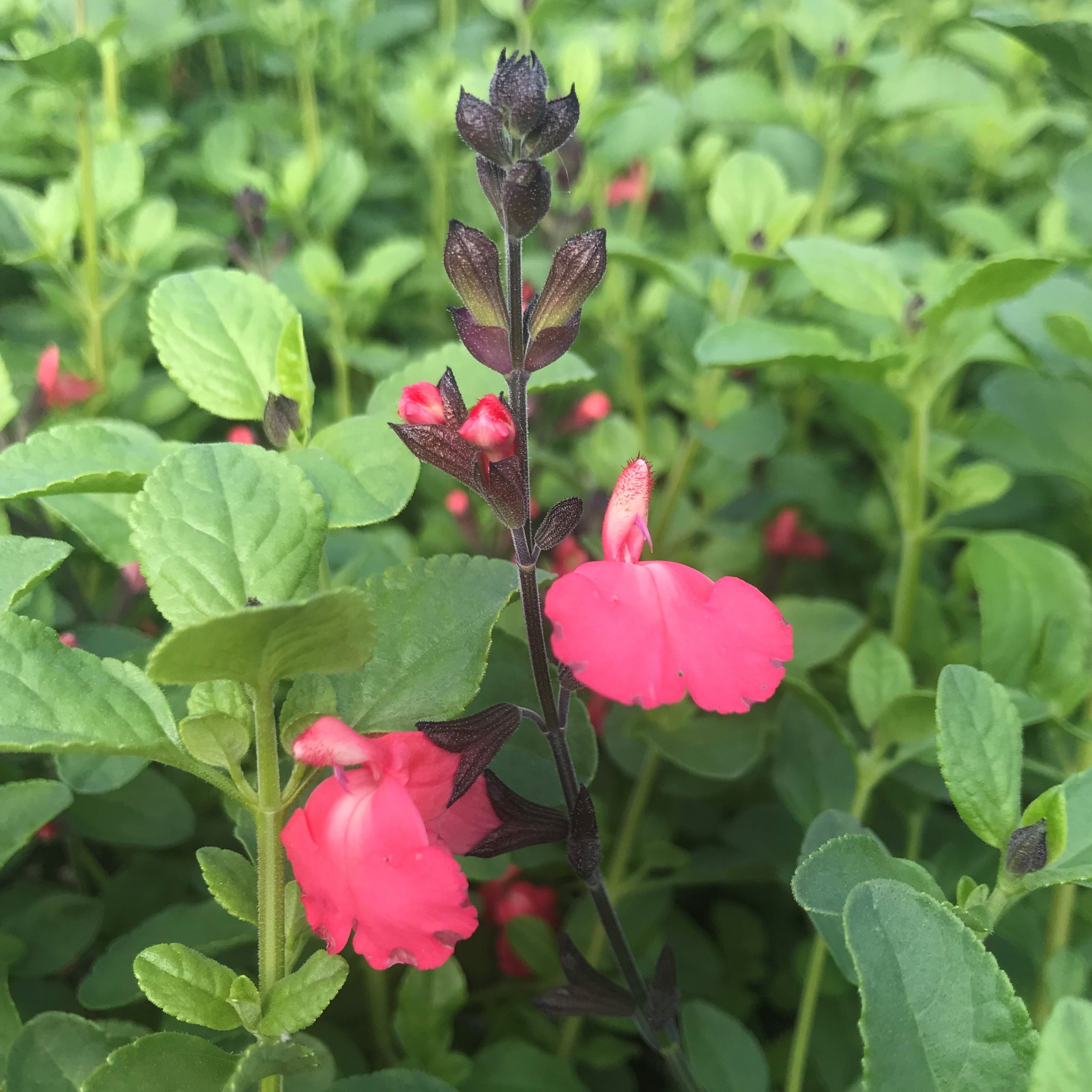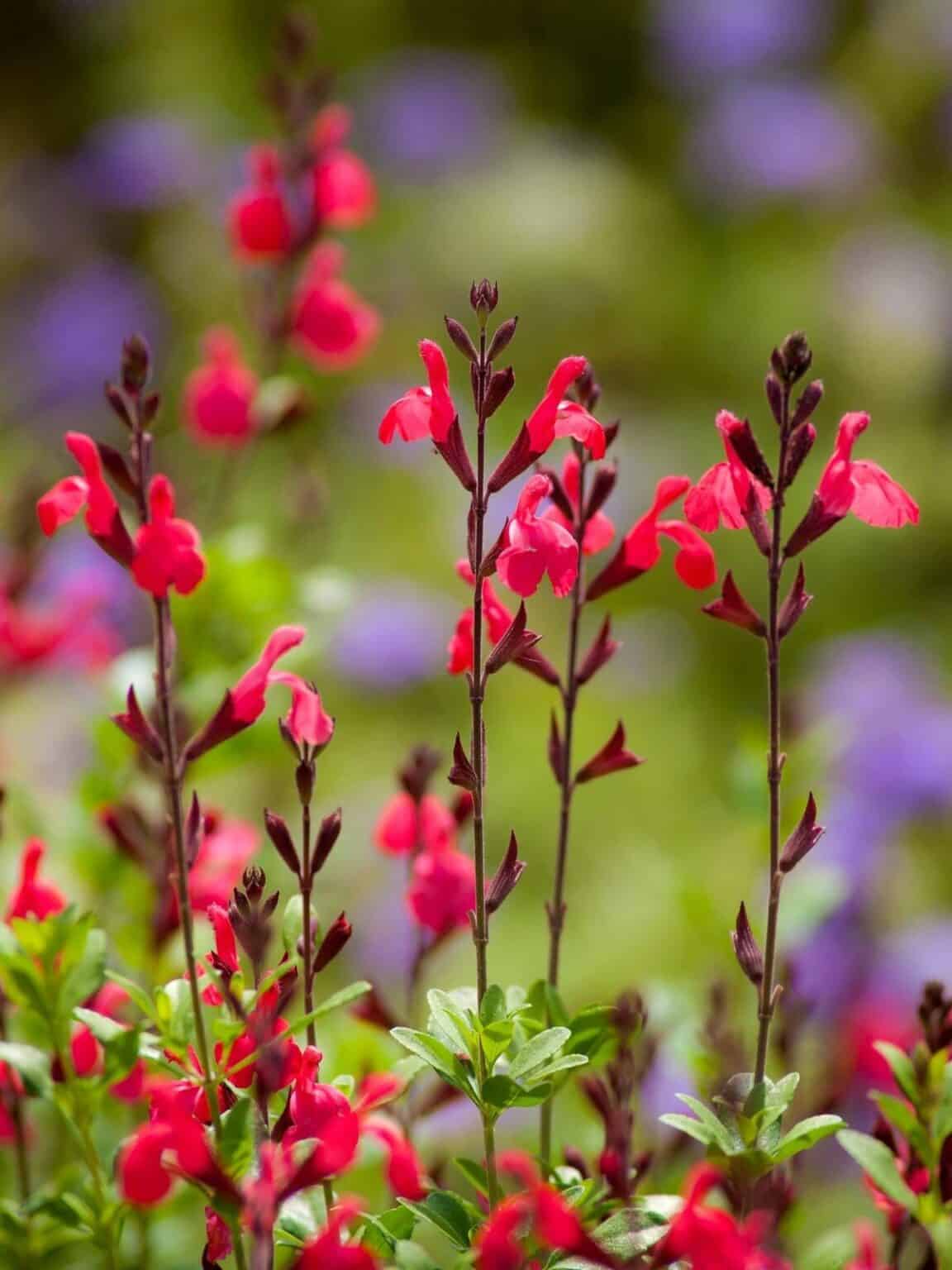

The genus name Salvia comes from the Latin word salveo meaning "to save or heal", in reference to the purported medically curative properties attributed to some plants in the genus.

Flowers are attractive to butterflies and hummingbirds. Best bloom occurs in late spring and fall, with sporadic bloom in the heat of the summer. Flower color is usually a form of red, but may also appear as orange, pink, purple or sometimes white. Two-lipped flowers bloom in whorls above the foliage on 3-6" stems from June to October. Small, rounded, oval leaves (to 2" long) are aromatic when crushed. It is native to rocky slopes from western and central Texas into northern Mexico. Stem: Stem Is Aromatic: No Stem Cross Section: Square Stem Description: Square stems are woody and very brittle.Salvia greggii, commonly known as autumn sage, Texas sage or red Chihuahuan sage, is a small deciduous sub-shrub that grows to 2-3' tall and as wide.Leaves: Woody Plant Leaf Characteristics: Semi-evergreen Leaf Color: Green Leaf Feel: Smooth Leaf Value To Gardener: Edible Fragrant Leaf Type: Simple Leaf Arrangement: Opposite Leaf Shape: Elliptical Obovate Leaf Margin: Entire Hairs Present: No Leaf Length: 1-3 inches.Flowers: Flower Color: Pink Red/Burgundy White Flower Inflorescence: Raceme Flower Value To Gardener: Edible Fragrant Long Bloom Season Showy Flower Bloom Time: Fall Spring Summer Flower Shape: Lipped Tubular Flower Size:
#Autumn sage full#

Despite its common name of autumn sage, this is a perennial that boasts a long flower season. Use it as a border, hedge, or mass planting in a children’s, butterfly, pollinator, or drought-tolerant garden. This perennial is deer-resistant, thanks to the smelly leaves. Good locations for autumn sage are slopes, banks, and naturalized areas. It is drought and slightly salt tolerant.

This plant attracts butterflies, hummingbirds, and other pollinators and is seldom damaged by deer. The cultivar 'Wild Thing' reportedly has better winter hardiness than species plants. It needs well-drained soil, and tolerates rocky soil. This sage prefers full sun but tolerates afternoon shade in regions with high summer heat. Greggi is in honor of Josiah Gregg (1806-1850), a botanist and explorer who discovered the plant on an exploration through Texas. Salvia, the genus name, comes from the Latin word salveo, meaning ‘be well’. Different cultivars offer flower colors from red to coral, and some are mixed with white. Growing 2 to 3 feet tall and wide, it is native to Texas and found mainly on rocky slopes. Phonetic Spelling SAL-vee-uh GREG-ee-eye DescriptionĪutumn sage is a small, herbaceous perennial or somewhat woody sub-shrub in the Lamiaceae (mint) family.


 0 kommentar(er)
0 kommentar(er)
